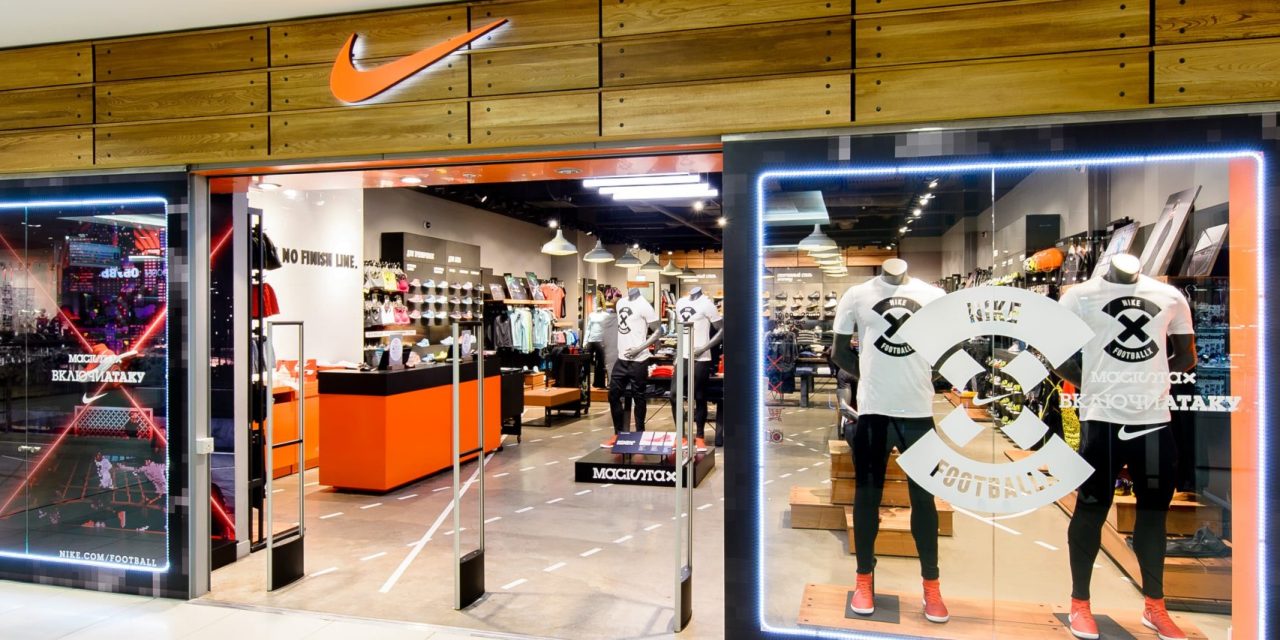Nike is making solid progress on its inventory glut problem

Nike is regaining momentum in major markets thanks to strong DTC sales, more inventory control and a bounce back in China.
On Tuesday, Nike revealed it made $12.4 billion in revenue for its third fiscal quarter, a 14% rise from the same time a year ago. Its direct sales, which include its website and owned-and-operated stores, hit $5.3 billion, up 17% year-over-year. Its most recent earnings period covers the three months ending Feb. 28, 2023 and includes sales from major shopping events like Super Saturday and Christmas.
Crucially, Nike made progress on one of its biggest issues of the past year: excess inventory. Like other apparel and footwear retailers, Nike turned to promotions to help with inventory glut, especially during the holidays. However, markdowns also contributed to a 330-basis-point drop in Nike’s growth margin for the quarter. On a positive note, Nike saw single-digit growth in China, despite challenges from reversing its “zero-Covid” policy, and is continuing to invest in new products and new collaborations.
Today, Nike has $8.9 billion’s worth of inventory. This is 16% higher from the same period last year, mostly due to “higher product input costs and elevated freight costs,” according to the earnings release. However, this is a solid improvement from Nike’s first and second fiscal quarters, when Nike reported $9.7 billion and $9.3 billion in inventory, respectively.
“We’re increasingly confident that we will exit the year with healthy inventories across the marketplace,” EVP and Chief Financial Officer Matt Friend said on Tuesday’s call. “In fact, given our brand momentum, we now intend to move through even more units by year end than we had previously considered.”
In another bright spot for the quarter, Nike made strides in China where it, like its competitors, was hit hard by the government’s “zero-Covid” policy that mandated store closures and lockdowns. In November and December, China began rolling back restrictions, and Nike started to see its first gains in the regions in several quarters. For this most recent quarter, Nike enjoyed a 1% rise in revenue for the region.
Back in January, Friend said on Tuesday’s call, Nike began to see “a rebound in brick-and-mortar traffic with strong retail momentum around [the] Chinese New Year accelerating into February, especially as our clean inventory position enabled us to serve customers with fresh seasonal assortments.” China is typically Nike’s third-largest market by revenue. Even with challenges, “we are confident that the fundamentals of growth for Nike in China remain strong,” Friend added.
Ad position: web_incontent_pos1
Nike has also benefitted as its rivals grapple with their own series of challenges. Adidas, which is also big in China, is particularly in a rough spot. Adidas is still sitting on hundreds of millions of dollars of unsold Yeezy merchandise, and earlier this year, it warned that operating losses for the 2023 fiscal year could hit €700 million. Adidas is also adjusting to leadership under its new CEO, Bjørn Gulden, who came to the company from Puma in January.
While it works to reduce inventory, Nike is focused on product innovation to better keep up with competitors. Over the past few months, Nike has rolled out the Air Max Scorpion shoe, the Pegasus Trail 4 shoe and the Forward apparel line. It’s also introduced new colorways and collaborations for some of its most popular models, including the Air Jordan, the Air Max and the Dunk Low.
Earlier this month, Nike announced its Sabrina 1 shoe in partnership with basketball player Sabrina Ionescu. It also introduced a new kids’ product, the Air Max 270 Go, and teased upcoming “retro” styles of the Air Jordan 3. Its shoe with basketball player Jayson Tatum, the Jordan Tatum 1, will launch on April 7.
In the past, when Nike has had problems with inventory, it’s “always used product development and product innovation as storytelling” to convince people to buy its products, Tom Nikic, SVP of Equity Research at Wedbush Securities, told Modern Retail. To customers, it can say, “Here’s some really cool new T-shirts. Here’s a really cool pair of shoes you’ve never seen before that are new… and better than [what] we had last year that was on sale,” he said.
“If history is any indication, I think that Nike will be able to lean on that product development engine that they have to ensure that they remain a premium brand,” Nikic added.

